#segurant
Text
The missing Arthurian knight - rediscovered in 2019
Well the title is a slight lie - the missing knight wasn't rediscovered in 2019, it was earlier than that, but he didn't became public until 2019.
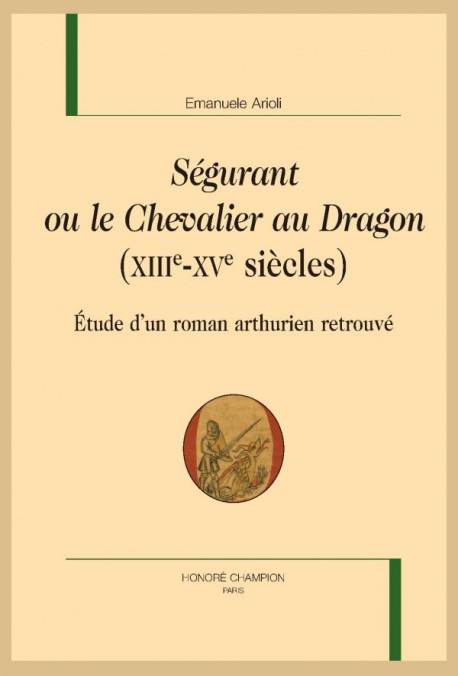
So what's this "missing knight" about? Well as the title says. There was a knight part of the Arthurian myth, and he had been missing ever since the Middle-Ages, and he was only recently rediscovered.
Or rather, to be exact - there was an Arthurian novel centered around a knight that existed and was a famous and well-known part of the Arthurian literature in the Middle-Ages, but that completely disappeared, and was forgotten by culture (as much popular culture as the scholarly one). Until very recently.
This rediscovered novel has been a hot topic of all Arthuriana fans in Europe for a few years now - and yet I do not see much talk about this onto this website, despite Tumblr being a big place for Arthurian fans?
So I will correct this by doing a series of posts about the subject. And this post will be the first one, the introduction post presenting to you "Ségurant, le chevalier au dragon" ; "Segurant, the knight of the dragon". A French medieval novel part of the Arthurian literature (hence the "chevalier au X" title structure - like Lancelot, the knight of the cart or Yvain the knight of the lion from Chrétien de Troyes), the reason this story was forgotten by all medievalist and literary scholars is - long story short - because it never existed in any full manuscript (at least none that survived to this day). It was a complete story yes, with even variations apparently, but that was cut into pieces and fragments inserted into various other manuscripts and texts (most notably various "Merlin's Prophecies").
The novel and the Knight of the Dragon were rediscovered through the work of Emanuele Arioli, who rediscovered a fragment of the story while looking at an old manuscript of a Merlin Prophecies, and then went on the hunt for the other fragments and pieces scattered around Europe, until he finally could compile the full story, that he then published in 2019, at the Belles Lettres publishing house, in 2019.
Arioli reconstructed the text, and translated it in both modern French and Italian for scholarly and professional editions (aka Honoré Champion in France, a reference for universities)...
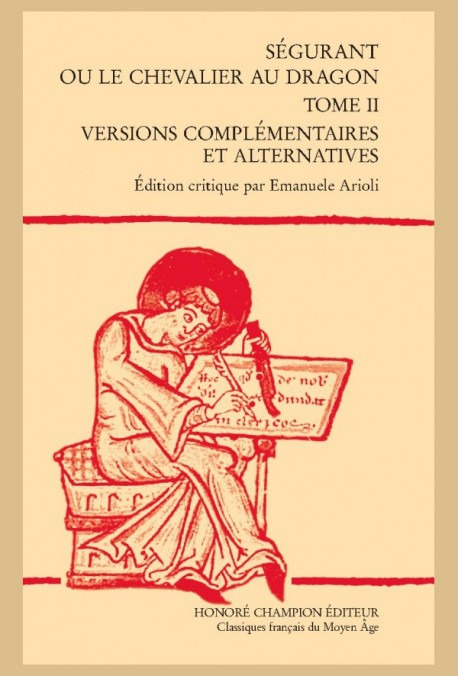
... But also for a more "all public, found in all libraries" edition - the famous 2019 edition at Les Belles Lettres.

And not only that, but he also participated to both a comic book adaptation with Emiliano Tanzillo...
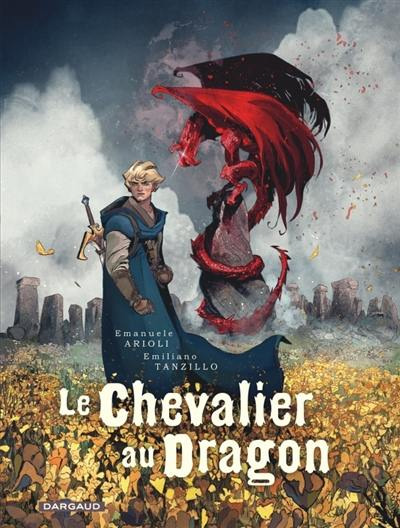
... and an adaptation as an illustrated children novel!

Finally, just a few weeks, the Franco-German channel Arte released a documentary about the reconstitution and content of this missing novel called "Le Chevalier au dragon: Le roman disparu de la Table Ronde". (The Knight of the Dragon - The missing novel of the Round Table). The full documentary is on Youtube in French for those that speak the language, here. And in German here for those who speak German.
Unfortunately there is no English version of the documentary that I know of, nor any English publications of the actual text - just French and Italian. But hey, I'll try to palliate to that by doing some English-speaking posts about this whole business!

#ségurant#segurant#the knight of the dragon#le chevalier au dragon#arthuriana#arthurian myth#arthurian literature#arthurian novel#discoveries#medieval literature#arthurian legend#arthurian knights#found media#lost media#that people didn't even know was lost
309 notes
·
View notes
Text

i decided to draw my current 4 main/fav ocs together... just to compare their designs + bodytypes side by side and try to quell my own self consciousness abt samey-ness.
2 notes
·
View notes
Text

I definitely loved eclipse
#fnaf#fnaf security breach#fnaf ruin#five nigths at freddy´s sucurity breach#fnaf eclipse#fnaf eclipse canon#sun and moon fanart#fnaf daycare attendant#sundrop#moondrop#fnaf sun#fnaf moon#fnaf segurity breach#segurity breach ruin#fnaf gif#eclipse fnaf#my gif#my art#my animation
2K notes
·
View notes
Text
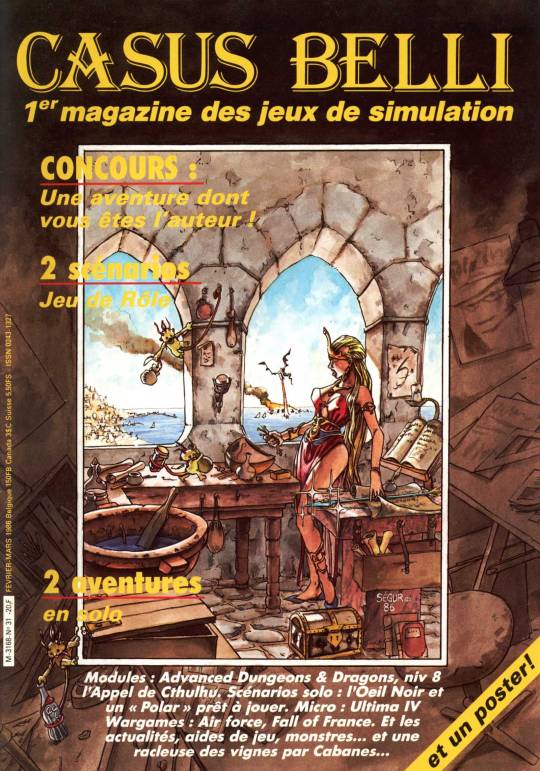
A wizard's laboratory with a view. Looks like the local dragon is bothering the fleet again. (Thierry Ségur, Casus Belli 31, February 1986)
An interesting feature of some Casus Belli covers is the art behind the art. The central scene is bordered by a different space or a completely unrelated image. In this example the main painting appears to be surrounded by the artist's studio, with drafting tools on a slanted desk and other art pinned to the wall. One of the wizard's imps has escaped the frame of her scene to fetch a Coca Cola bottle in the lower left.
Didier Guiserix's electrifying scene on issue 31 covers up a picture of a cat in the background. For issue 32 the elf sits in front of a medieval fantasy scene to which she belongs, but she seems to be perched on a rusty steel drum related to the near-future sci-fi scene in the border.
#Thierry Segur#Thierry Ségur#D&D#Dungeons & Dragons#wizard#dragon#dnd#mage#magic user#encounter at sea#wizard's laboratory#wizard's tower#fantasy#imp#imps#JDR#jeu de rôle#jeu de role#Dungeons and Dragons
128 notes
·
View notes
Text

Baby Yaga's Cat, illustrated by Adrienne Segur for My Big Book of Cat Stories, published 1967
186 notes
·
View notes
Photo

Philippine and the Lute Player by Adrienne Segur (1901 - 1981)
430 notes
·
View notes
Text

Sundrop fanart
I honestly like this drawing more than the moondrop one.
361 notes
·
View notes
Text

Haha last time that I draw them was a long time and now they look so different, and I love that.
#draw#drawing#fanart#lol#fnaf sb#fnaf segurity breach#fnaf security breach#fnaf#moon fnaf#fnaf sun#fnaf daycare attendant#fnaf dca#fnaf sun and moon#fnaf sundrop#fnaf moon#moondrop fnaf#fnaf moondrop
57 notes
·
View notes
Text

Even though it's late, I preferred to finish this Halloween drawing
76 notes
·
View notes
Text

Gregory? NOOO!!
#art#digital art#fanart#illustration#my art#drawing#my art <3#five nights at freddy's#fnaf#fnaf security guard#fnaf segurity breach#security breach#fnaf ruin#security breach ruin#cassie#fnaf cassie#gregory#fnaf gregory#the mimic#video games#glamrock bonnie#glamrock freddy#roxanne wolf#fnaf montgomery#glamrock chica
65 notes
·
View notes
Text
This gator is a little grumpy today
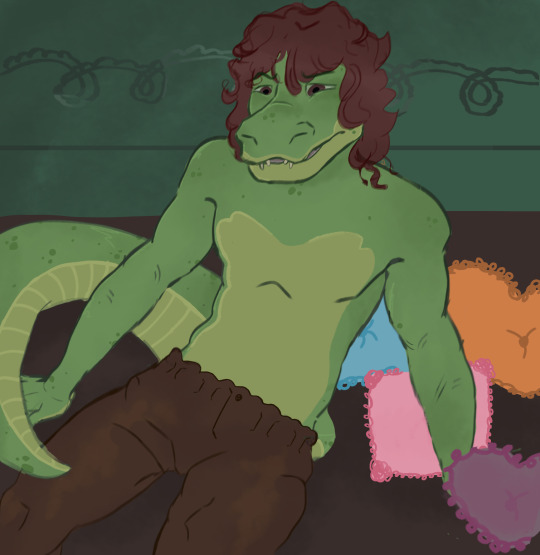
24 notes
·
View notes
Text
Ségurant, the Knight of the Dragon (2/4)
Let us continue down our path along the documentary. Here is the German version of it, by the way, if you are interested.
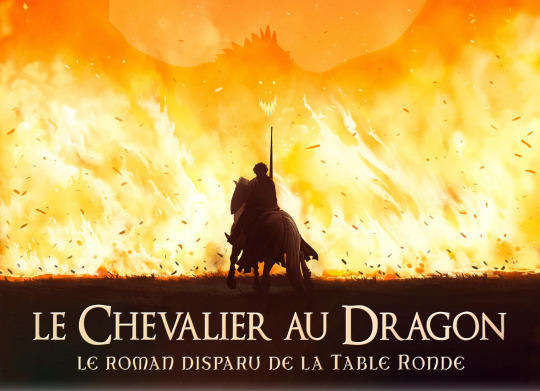
So, last time we left with the sad conclusion that the origins of Ségurant were not from Great-Britain: he appears nowhere in England, Scotland or Wales. If there is nothing in British land, the next move is of course towards the land where Ségurant's tale was first found out, and the second main source when it came to Arthuriana: France.
The documentary reminds us that the Arthurian crossed the seas and arrived in France in the 12th century. It was first written about in France by a man from Normandy named Wace (who was the one who invented the Round Table), and then it was time for Chrétien de Troyes and his famous romans (first romans in French literary history and the beginning of the romanesque genre) – which became best-sellers, translated, imitated, continued and rewritten throughout all of Europe, becoming the “norm” of the literary culture of Europe at the time (in non-Latin language of course). Chrétien de Troyes’ novel became especially popular among the expanding cities and newly formed bourgeoisies of the time, making Lancelot and Perceval true European heroes, and resulting in thousands of Arthurian manuscripts being sent and created everywhere.
There is a brief intervention of Michel Zink explaining what was so specific about Chrétien’s romans: by the time Chrétien wrote his novels, the legend of king Arthur was well-known and famous enough that the author did not feel the need to remind it or expand about it. As in: Chrétien’s novels all happen at the court of king Arthur, or begin at the court of Arthur, but none of them are about Arthur himself. Arthur and his court are just the “background” of his stories – Chrétien’s heroes are the knights of the Round Table, who were until this point basically secondary characters in Arthur’s own story. And all the novels of Chrétien follow the same basic structure of “education novel”: they are all about a young man who goes on a quest or goes on adventures, and in the process discovers his own identity and/or love and/or his destiny. And they all end with the young man being worthy of sitting at the Round Table ; or if they were already at the Round Table, they are even worthier of sitting at it.
But then the documentary completely ditches the French aspect to move to… Italy. As Arioli explains, as he was investigating the origin of the Prophéties de Merlin manuscript in which Segurant’s story was consigned, he checked an inventory of all the Merlin’s Prophecies manuscripts and thus entered in contact with the one that had made it, Nathalie Koble. And talking with her, she led him to a Merlin’s Prophecy manuscript kept in Italy – more precisely in the Biblioteca Marciana of Venice, one of the greatest collections of medieval manuscripts in the world. The documentary goes through a brief reminder of how in the 13th century the Republic of Venice was one of the greatest sea-powers of Europe, and formed the crossroad between the Orient and the Occident through which all the precious goods travelled (spices, silk… but also books) ; and how in the 14th century Petrarch had the project of making a public library in Venice and offered his own collection of books to the city, leading to what would become a century later the Biblioteca Marciana… And so we reach the manuscript Koble showed Arioli. A very humble manuscript of the Prophéties de Merlin – no illumination, no illustration, a small size, not of the best quality ; but that’s all because it was a mass-produced best-seller at the time in Venice. Koble briefly reminds us of the enormous success of the genre of the Merlin Prophecies ; of how French was spoken in Venice because it was the vernacular language of nobility (hence why this manuscript is in French) ; and of who was Merlin and why his prophecies interested so much (being the son of a human virgin and an incubus devil, he had many powers, such as metamorphosis – transforming himself or others – and seeing both the future and the past, aka “existing beyond temporality and memories” as Koble puts it). And finally she points out the very interesting detail that the Merlin Prophecies are always coded, need to be deciphered… But the process is very easy for anyone who is an informed reader.
Indeed, many of the “prophecies” of Merlin are actually coded and metaphorical descriptions of events part of the Arthurian legend. Koble presents us a specific prophecy: “A leopard named Of the Lake will go to the kingdom of Logres and will open his heart to the crowned snake. But he will sleep with a white snake and remove its virginity, while believing he slept with the crowned snake”. For a fan of Arthuriana, it is clear that the “leopard of the lake” is Lancelot du Lac, while the “crowned snake” is Guinevere.
And then, Koble showed Arioli a prophecy contained in this manuscript that apparently was about Ségurant. “Know that the dragon-hunter will be bewitched at the Winchester tournament. A stone will shine on his tent, projecting a great light outside and inside. When he will be king in the Orient, this stone will be placed onto his crown. When he will cross the sea to visit my grave, he will place the stone within the altar of Our-Lady (Notre-Dame). And thus, the dragon of Babylon will seize it.” The prophecy clearly is about Ségurant. Now, the actual author of this manuscript is unknown – as Koble explains, 13th century romanciers who wrote in prose loved inventing false identities for themselves, many times passing off as Merlin himself. The alias of the author of this specific manuscript is “Richard of Ireland”, but Koble’s personal research found out he was actually a man of Venice. Indeed numerous prophecies in the book describes the landscape surrounding Venice or Venice itself ; and there are many references to the political events of Venice at the end of the 13th century.
So, in conclusion: Ségurant was a great heroic figure in the region of Venice at the time. And so Arioli became convinced that Ségurant’s origins were to be found in Northern Italy, and spread from Venice to the rest of Europe.
Our next move is to the Italian Alps – to the Italian Tyrol, and more specifically to Roncolo Castle. Built in the 13th century, it was then bought in 1385 by the Vintler brothers, Nicolas and Francesco/François. The Vintler brothers were part of a bourgeois family that had recently become part of the nobility, and to play onto this, to “legitimate” their nobility and show they had well “adopted” the lifestyle of the nobility, they commissioned a set of medieval frescos, filled with knights and ladies, bestiary animals (fictional or real). To this day, the frescos of Roncolo Castle still form the greatest cycle of Arthurian wall-paintings in the world. And the most interesting part of those paintings, for Arioli’s investigation, is the “Gallery of the Triads”. A gallery where, as the name says, triads are depicted, representing the ideals of knighthood. There is a triad of the “greatest kings” – King Arthur, Charlemagne and Godfrey of Bouillon. There is a triad of the “three greatest knights of the Round Table”: Perceval, Gawain and Yvain (the Knight of the Lion). There is the “three most famous couple of lovers”, with Tristan and Isolde at the center. And finally we have the triad of the “Three most famous heroes”. Only two of them are named – one being Theodoric “with his sword”. And the other… Is “Siegfried, with his crown-depicting shield, as he was described in the Song of the Nibelungen”.
And here’s the new twist in our investigation. Siegfried… Ségurant… Two dragon-killers with similar names. As it is explained in the documentary, the Tyrol was not a closed land, but rather the junction point between Southern Germany and Northern Italy. As a result, Germanic literature was just as popular here as the Arthurian legend – in fact we have a 13th century manuscript written in the Tyrol that contains the Song of the Nibelungs. And so here is Arioli’s new theory: Siegfried crossed the Tyrol, reached Italy, and there became Segurant, the Knight of the Dragon.
The documentary finally gives us the next part of Ségurant’s story, as Arioli first discovered it in the Arsenal manuscript: New character appears! “La fée Morgane” – dear Morgan le Fay, half-sister of King Arthur. “In her castle, the fairy Morgane invoked a devil from Hell. Devil, what is your name? she asked. I am called Lucifer, and I am called Dragon, because I swallow the souls of the sinners. She answered: I needed someone like you for sure!” (I roughly translate here). But here is the idea: the dragon of the legend is not just any mere or random dragon, it is a devil (in fact THE devil himself), invoked by Morgan and obeying her. As the tale continues, we learn that Morgan sent the dragon to cause chaos and panic at the Winchester tournament. “Suddenly, a wall of fire appeared ; behind the flames was a hideous dragon”. And seeing the monster, Ségurant swore that, if he did not set free the kingdom of Logres from the dragon, he would not live one more day. And so he crossed the wall of fire and “forgot everybody, himself as well as the others, he forgot everything, except for the dragon, his sole obsession”. (You might recall this as being a very common trope among French Arthurian roman, like in Lancelot or the Knight of the Cart, where Lancelot every time he sees Guinevere forgets everyone around him, forgets where he is or what he is supposed to do, forgets even his own name, and has his mind only and solely filled with Guinevere. That’s a typical French Arthurian knight thing part of the whole aesthetic of knighthood at the time – but I might explain more about this later).
And yet another twist in the story… Because the roman says that Ségurant could NOT kill the dragon. Why? Because the dragon was “a pure spirit”. And “a spirit, be it good or evil, never dies”. WHAT A TWIST!
We return to the documentary. Crossing the Alps on the search for Siegfried, Arioli stops next by the castle of Drakenburg in Germany – built in 1882 by a wealthy banker, this Neo-Gothic castle is a great homage to the Nibelungenlied – The Song of the Nibelungs. The documentary also reminds us that, at the end of the 19th century, medieval legends were back into fashion thanks to Wagner’s cycle of operas “The Ring of the Nibelungen”. Now, the Song of the Nibelungs is described as “essentially the story of two great families of heroes, the Burgundian heroes and the Xanten heroes. The Song begins when a great hero from the Xanten “side of the world” arrives in the “Burgundian world” – this great hero is Siegfried. And the story of how Siegfried killed a dragon is… a mere mention. An allusion. The Song is not about it, it does not describe it directly, it is another voice that recalls briefly how Siegfried killed a dragon and bathed in its blood. Thus we see that – similarly to what Chrétien did with Arthur – at the time the Song was written, the author and the audience were supposed to know already very well the Siegfried legend. They knew it well enough that it was seen as unnecessary to recall it, a brief mention is enough.
Now, it is easy to admit that Ségurant le Chevalier au Dragon might be a variation of the same myth to which Siegfried the dragon-hunter belongs – similar names, both killed a dragon AND both are also famous for “crossing a wall of fire”. The myth of Siegfried widespread, existing over a large chunk of territory in Europe – not just Germany, but also France, Italy and the Nordic lands. However, while the stories of Siegfried have appeared in the “heart” of Europe around the 1200s, the myth actually pre-existed in Northern Europe for a much older time – in Sweden, in Norway and in Iceland, before Siegfried appeared, there was his Norse ancestor… Sigurd.
And so, this is the next step in the Ségurant investigation: Sigurd, the hero of the Viking sagas.
#arthuriana#arthurian myth#arthurian legend#arthurian literature#ségurant#segurant#le chevalier au dragon#the knight of the dragon#morgan le fay#merlin#siegfried#sigurd#italian literature#french literature#european myths
25 notes
·
View notes
Text
⭐️




232 notes
·
View notes
Text



cassie nwn
#fnaf#fnaf security breach#fnaf ruin#five nigths at freddy's#roxxane wolf#fnaf roxxane#glamrock roxxane#fnaf fanart#fnaf cassie#fnaf cassie fanart#segurity breach ruin#my art
176 notes
·
View notes
Text
é incrível, sempre que saio com minhas amigas e elas começam a falar das experiências delas eu fico assim

pq eu sou a amiga que nunca fez nada
#🪞 ' solie talks.#vcs sabiam#sabiam que a escritora de vcs nunca sequer segurou mãos romanticamente#com quase 20 anos na cara#sabiam???
26 notes
·
View notes
Text

Vanny redesign <:]
#my art#fnaf segurity breach#fnaf sb#fnaf#fnaf vanny#security breach vanny#sb vanny#five nights at freddys vanny#five nights at freddy's
69 notes
·
View notes